Weird Positions at the Beginning of Karate Kata - Useless Techniques?
Asian traditional martial arts often contain ceremonial, aesthetical, and etiquettal elements. My karate sensei always tries to explain the applications of all the new kata we learn in our dojo. It is important not to perform kata as a dance or gymnastics. Kata is a collection of techniques that simulate certain fight situations and possible suitable actions that might help the practitioner. Each kata is different and contains different sequential techniques. These sequences are just an inspiration, ideas that can be adjusted and used in a fight. Kata serve as a karate library. They contain all the karate techniques, their possible usage, transitions and stances, etc. There are kata for beginners like heian kata, and kata for more advanced students. Training kata is also a good physical exercise and can be used to improve our connection of techniques, kime and relaxation, and many other aspects of our karate.
Sometimes I wonder what the meaning is of certain positions and stances in Kata. Many techniques like punches or kicks are, of course, quite clear. There are really many applications, called kata bunkai, that can be created based on the various parts of the kata. I have seen many applications that are sometimes very different from each other. Some are more traditional, some more innovative and practical. That's alright. Karate should be useful, not just rigid and dead. I think that the ancient masters who created these kata had an idea of their usage but also knew that there are many other ways. That's why kata are still so cool!
This article might be a bit of anachronism. I do not know what Funakoshi sensei or other old masters meant when they created the kata. I just try to explain how I understand them and how I incorporated some difficult-to-justify elements in my own karate. It reminds me of shaku plates used in China, Korea or Japan in the ancient times. They are small scepters that high-ranking officials usually held in their hands, ritually in front of them during important ceremonies like coronations etc. They became ritual objects and parts of the ceremonial outfit. The funny thing is that originally they were just simple plates where the officials had notes about their speech or the schedule of the complex and long ceremonies. So basically, a cheat sheet which slowly became a ceremonial thing and its original purpose was already forgotten.
There are several parts of kata that are quite hard to explain. There is a lot of discussion about some of them. What are the strange staring positions of certain Shotokan kata? Maybe they foreshadow the indented usage of the kata, maybe they can be used as real technique, maybe they are just fitting the aesthetics of the given kata. Most of the kata start in the standard yoi position. And here is starts! Usually we start with idle position of yame, standing with legs together, hands parallel with the body and then go to yoi with legs moving to a little wider stance and hands in fists at the belt. I have seen many karate practitioners doing this transition with almost ceremonial seriousness, having this extremely focused look, slowly positioning the hands. To me, this yoi position is simply being ready for fight. Not being in kamae, the stance where one leg and both hands are pointing towards the opponent. Kamae is already engaged in a fight. Yoi is a preparation; we do not want to fight, we are just prepared to start at any time. In a real situation, this would be the state where we do not want to look aggressive to provoke the opponent who tries to pick a fight, so we are just silently waiting. I do it naturally, just place the hands near the waist, looking in front of me (at the opponent).
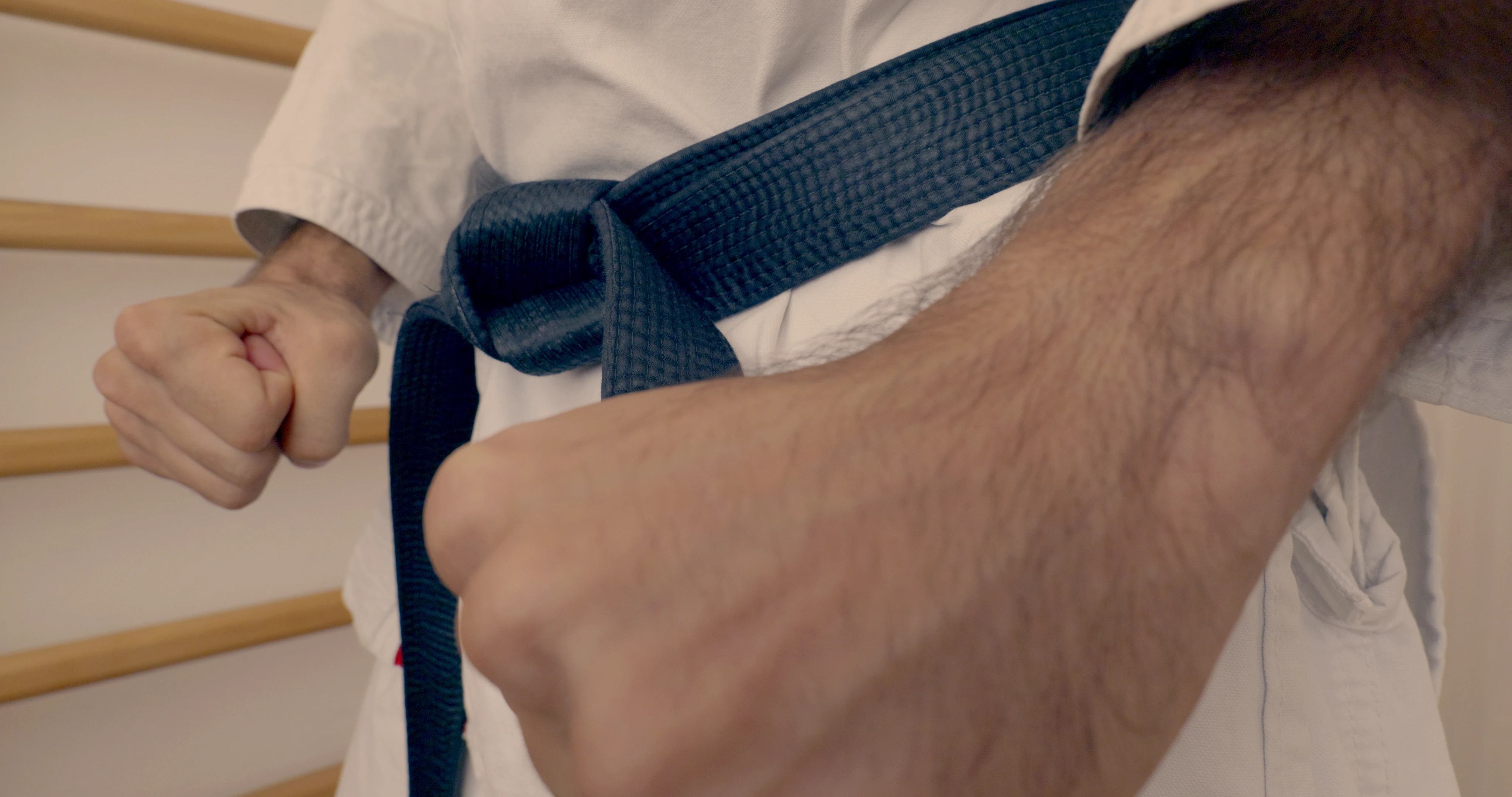
Yoi is OK, but there are more strange positions in some kata. Most common opinion is that they are remnants of Chinese kung-fu positions which were probably used as inspiration for many karate kata. For example, the beginning of kata Jitte or Jion is very similar to the traditional stance that we know from kung-fu movies. This stance was usually meant as a greeting and was a sign of self-control and respect. How can this be used in a fight? We train in our dojo sometimes techniques from various positions to simulate different real-life situations. Doing techniques form sitting positions, leaning against the wall, in a small space of an elevator, with hands holding a bus strap, etc. That's why I always try to think of possible usage of even strange techniques. Both Jitte and Jion start with backwards defensive motion. What about an opponent approaching us, we hold our hands in front, touching the opponents chest or even grabbing the clothes, keeping distance. Then we see the opponents attack coming so we defend but not from the yoi position but from the position where the hands are controlling the opponent. Or what about just standing somewhere, chilling, leaning against a railing, walking staff, broom, small pillar, the hands would be in a very similar position.

In Chinte, one hand is placed over the other one at the chest. Japanese used to wear kimono or yukata a lot. They used to place things either in a pocket in the sleeve or behind the edges of their clothes around the chest. The Chinte position might be a situation where one is trying to get something out of this place or put something valuable there to protect it in the starting fight. One attacker comes from the side, and the practitioner can start with a tetsui hammer attack from this position. Nowadays, we might be wearing a jacket so we are taking it off, undoing a button or zip and then suddenly we need to fight.

Bassai dai starts similarly to Jitte with hands together but below the waist. Holding a heavy bag in front of us? Holding a dog on a leash? Or maybe blocking someones knife or holding the opponents hands, preventing him to reach his pockets where weapons might be hidden. Or in samurai fights, when one samurai wants to take out his sword, someone might be unarmed or might just want to avoid the conflict so he holds the opponent's hands at the sheathed sword to prevent him unsheathe it.

In Empi, the hands are at one side of the waist, one in hikite and the other one covering it with open palm. I have heard explanation that this is the position of grabbing a sword and then changing the intention and starting a block. Could be! I imagine it in our current world as simple taking something out of pocket, putting something to a heavy bag, or adjusting the belt on trousers. This pose is also similar to the thing we all do before each training. Tying the straps on the karate gi, unless we have them torn off already. Then someone suddenly attacks. The motion after the lowered block where the hands go back to the initial position (slightly differently placed) can be just under of the opponents leg and lifting him up with a throw.
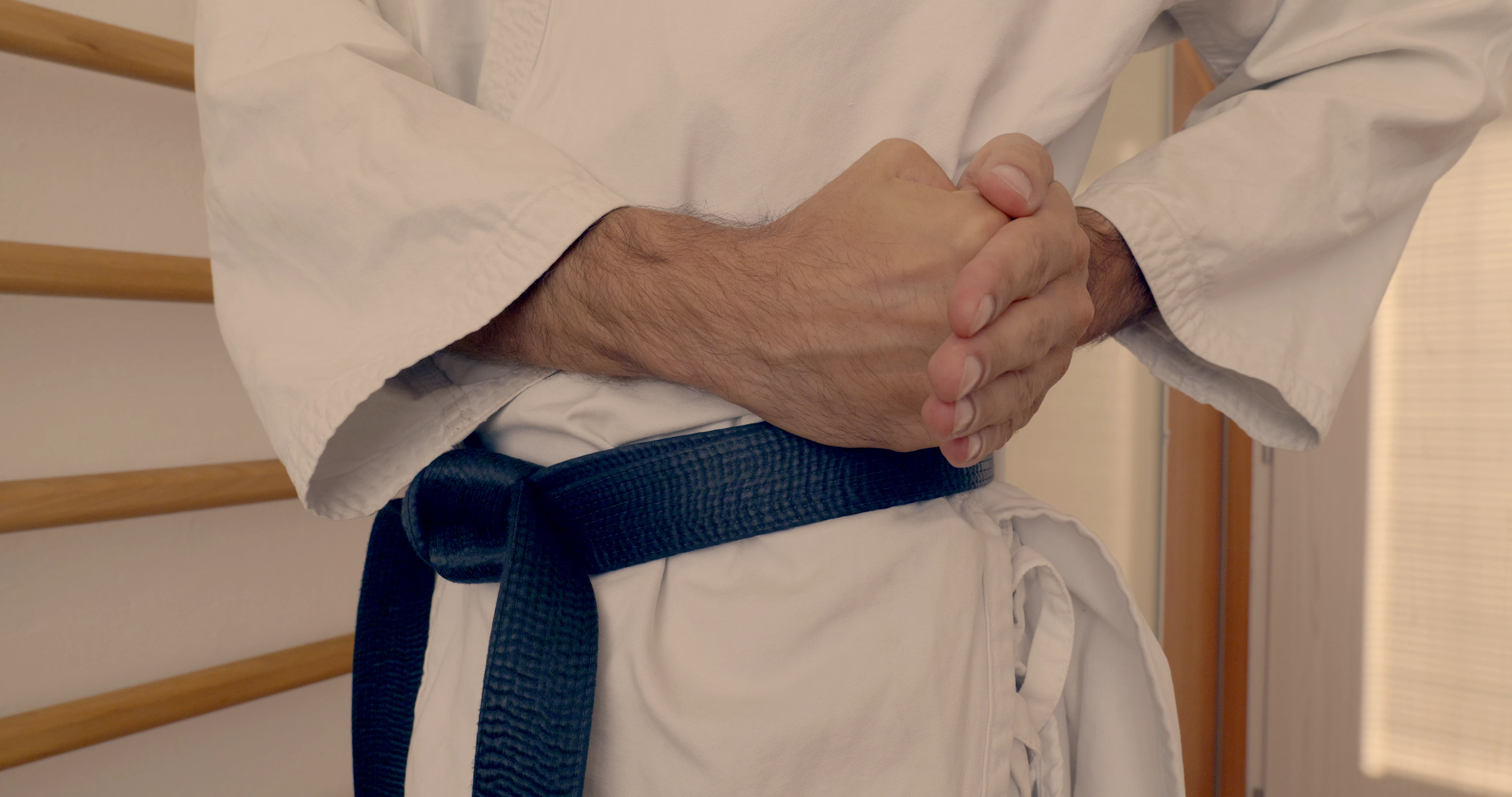
This is not a beginning position but it is a stance called tsuru dachi, translated as a crane stance. Might be related to the animal kung-fu styles. It is used, for example, in kata called Gankaku where a yoko geri is performed from this stance. Reminds me a bit of the famous Karate kid one legged kick. What is the purpose of tsuru dachi? It is extremely unstable. One idea is simply an injured leg. It might be painful to stand on both legs so this stance might simulate the situation where one leg is slightly lifted up. To perform good techniques in tsuru dachi, the practitioner has to control the core of the body, keep the muscles connected to stay stable. It is a good training for situations where the body balance is disturbed by injuries or uneven environment. Another case might be when the opponent grabs one's leg which happens quite often when a kick is not fast enough. Similar is neko-ashi dachi. The cat stance, where one leg is lifted and standing on the koshi. Another use-case might be the transition between kicks. When doing multiple kicks, it is possible to do them without touching the ground in between, just going to hikiashi and doing another one, that would look like tsuru dachi a bit. Or just touching the floor, getting a little stability back and kicking again resembles neko-ashi dachi. Not just after or in the middle of the kicks but sweeps as well.

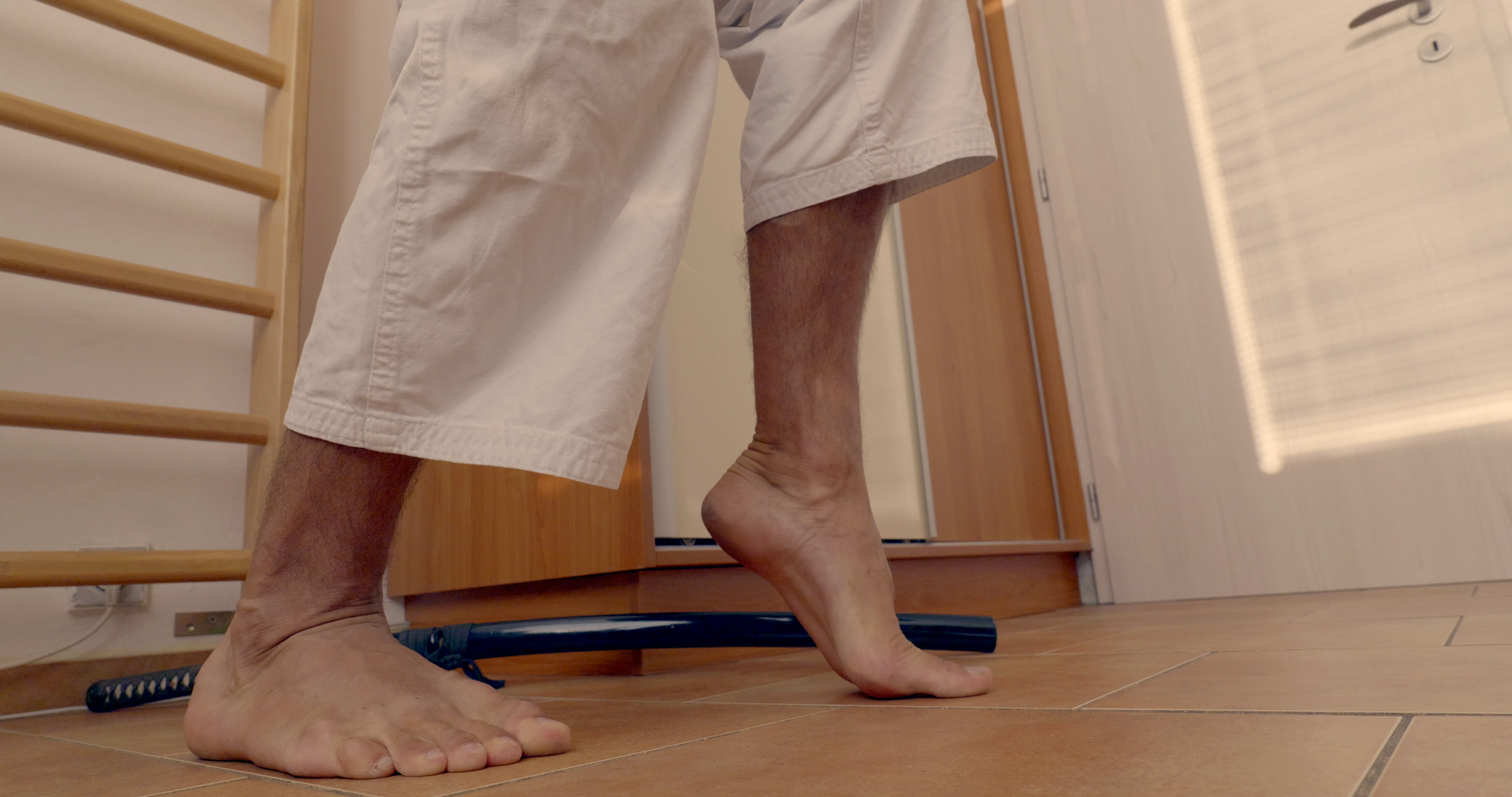
At the beginning of Kanku dai the hands are open in front of the body. When I look at this stance from the distance, it looks like a person just holding the belt. Maybe it is just this position or relaxing, hands leaning against the belt. Or maybe it is even more natural thing. Imagine someone trying to grab your clothes at the chest. The first reaction of most of the people is motion of the hands forward. The hands would naturally move towards the center. The opponent might be just bluffing, so our hands stop somewhere in front of our waist, quite similarly to this Kanku-dai pose. So maybe this is just the beginning of a defense when the situation is confusing, the hands stopped in the middle of an action, not prepared in yoi but in 15% of the possible technique trajectory.

Tekki Nidan starts from yoi but the hands go up to the chest. This is often explained as a counter-technique against a grab around the shoulders from the rear. Now, imagine another situation. Just standing at a fence that is slightly lower than you. Relaxing, leaning with one elbow on the top of the fence. We usually also cross the legs when standing like that, right? See the similarity? The Tekki Nidan first technique is a side step looking quite like this.
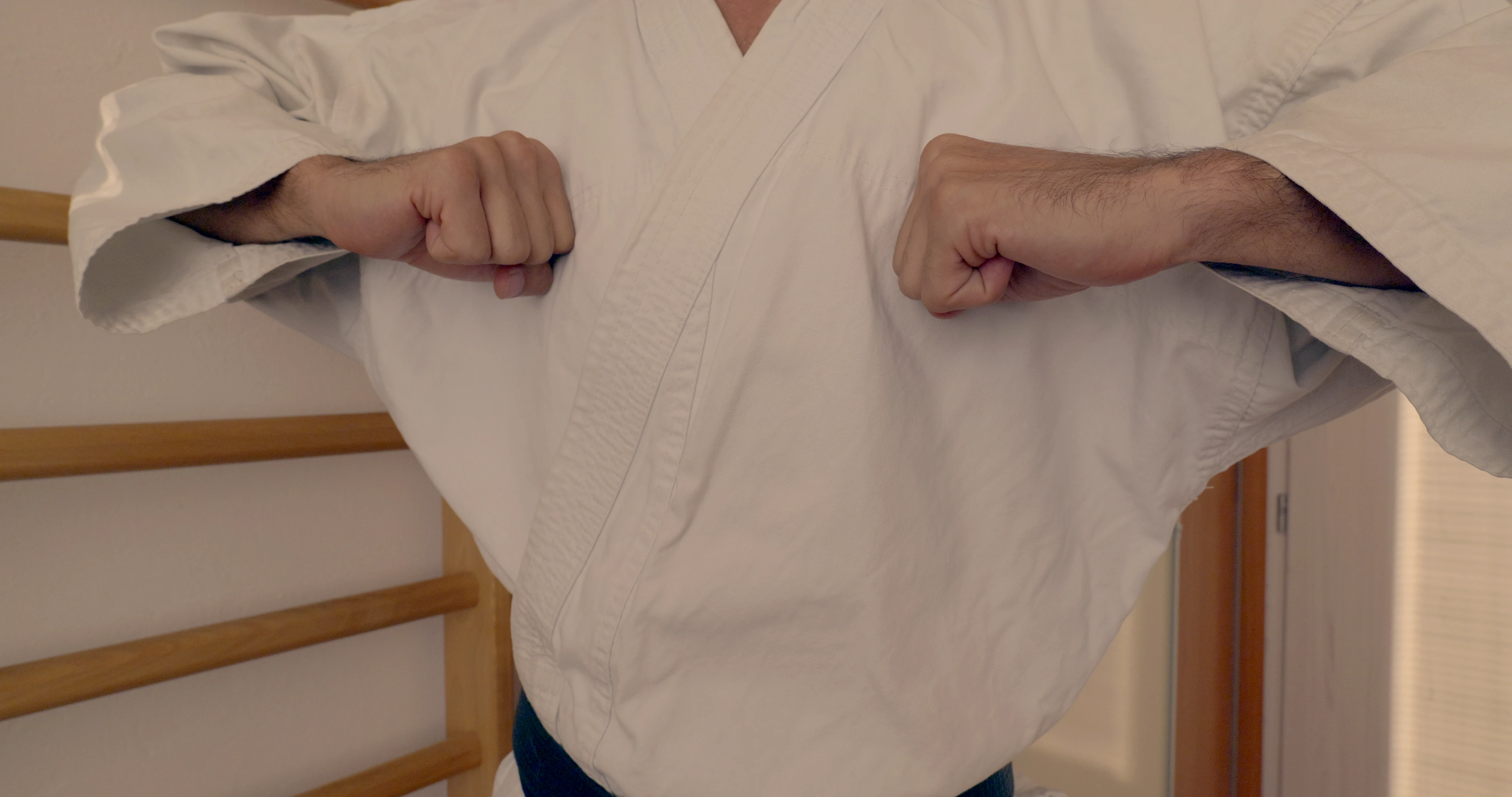
This pose is not a initial one but appears in the middle of Heian Sandan. After a sequence of techniques, the practioner slowly stands up in a normal standing position with hands prepared for the yoko empi uchi elbow strike. Do I need to even talk about this? We often stand like this, relaxing the hands on the hips. It's quite interesting how this position can be quickly used as a strike or block with the side of the elbow. Similar application is is the kata Gankaku.
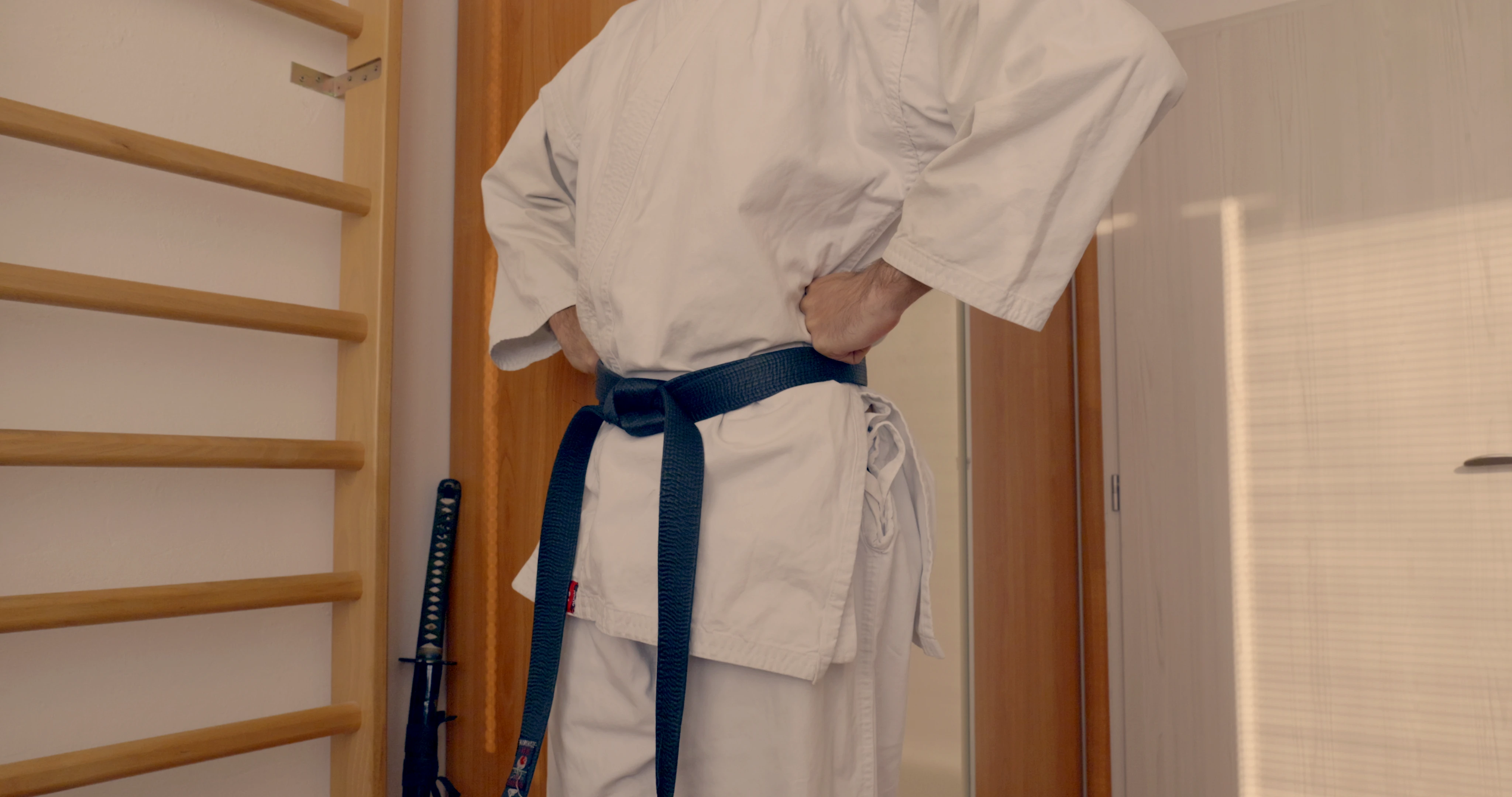
Bassai sho starts similarly to Bassai dai but the hands are open. The use-case can be similar to Bassai dai. I image it a bit as a star of a sweeping motion. Similar to Kanku dai, the hands are prepared at the initial stage of the technique. When there are many opponents, the hands might be prepared to throw the opponent attacks to the side. In our modern era, I can imagine this position to resemble unlocking the door, hands on the handle and the key. Or just picking vegetables at the market, having hands in the box at a stall. Bassai sho also starts with the hands going back as if blocking a sneaky rear attack. Please excuse me, but as a man, I can also imagine this as taking a pee. That can be quite a good opportunity for an unexpected attack from the opponent. Someone might also try to grab and hold your hand in front of you. The initial move in the kata might as well serve as the freeing technique.
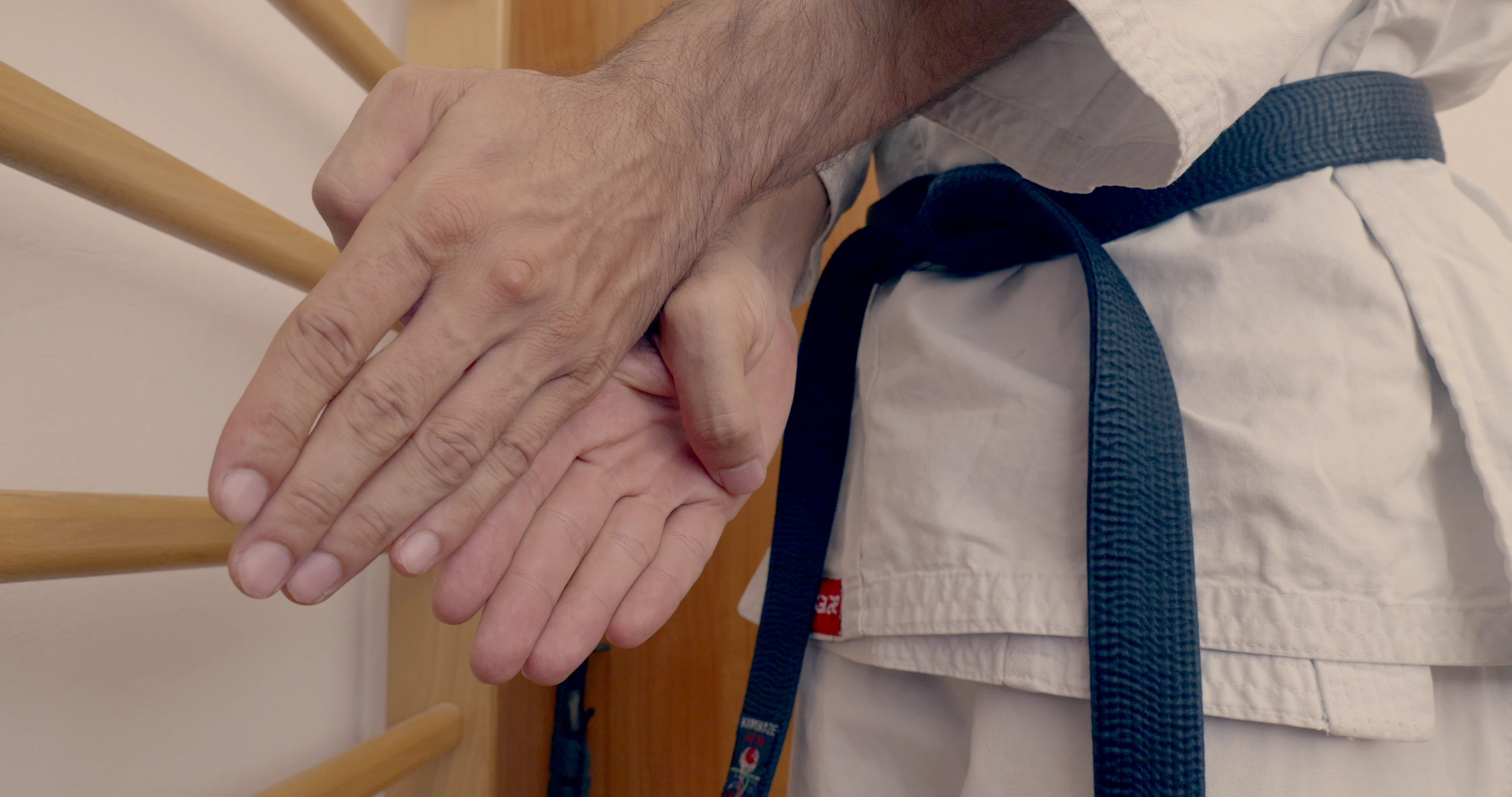
Initial pose of Tekki shodan can be used similarly as Kanku-dai or Bassai sho. I guess that this position can be also used as a simple block that keeps our intimate parts intact. Or when leaning against the wall, with the whole shoulder touching the wall. The impulse used to quickly shift from the wall involves the hand at the wall to push against it and the hand would then move to the direction from the wall. The hands would end up more or less in this position. Or we can simply be holding a heavy bag in front of us.
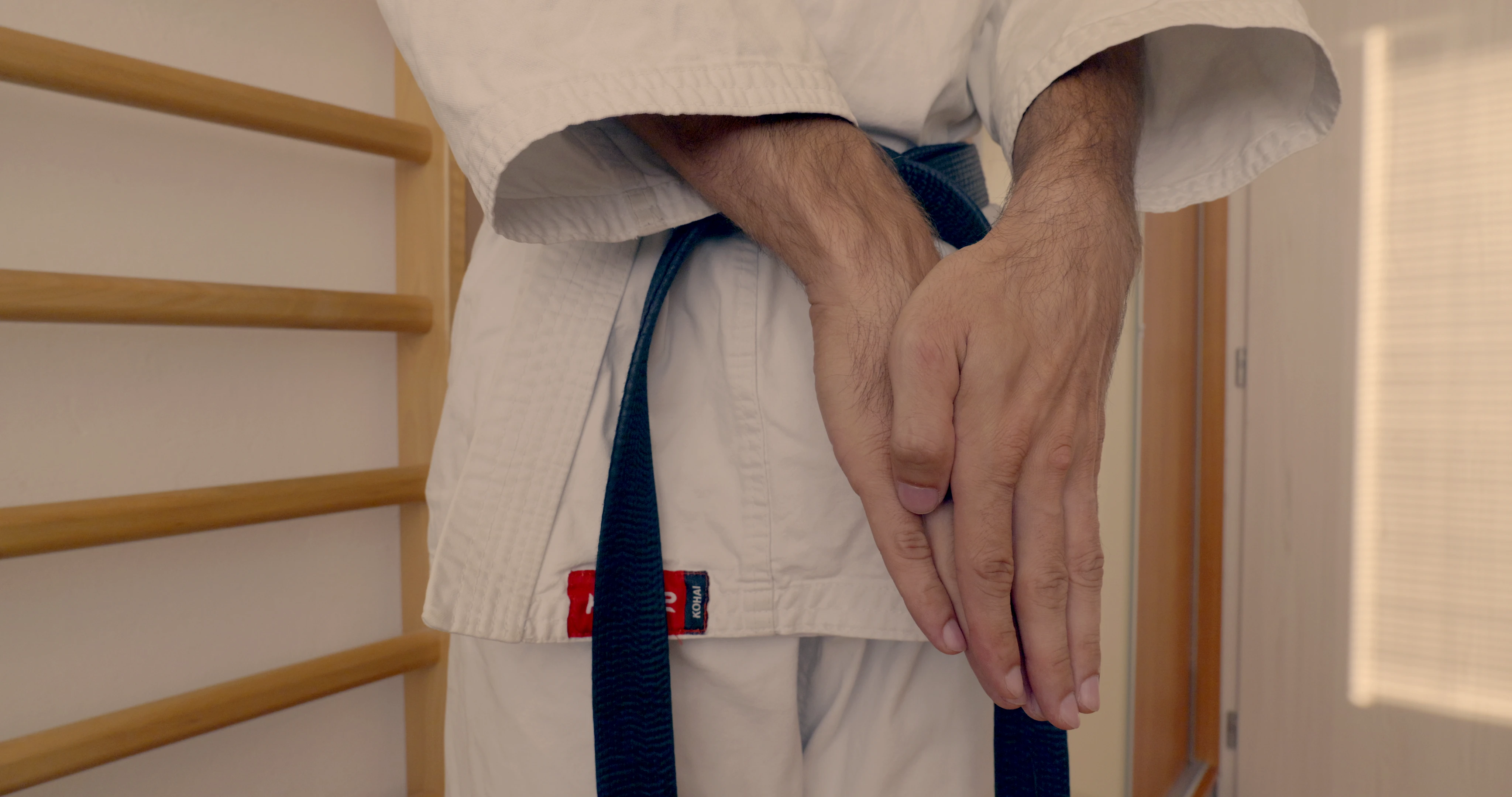
Unsu, one of the most beautiful kata in my opinion, starts with the hands at the sides, going up to the center, and performing a push or strike to the face to two opponents at each side. The hands at the sides can be holding two bags or buckets. It can also be yoi. When we do yoi, the idea is that the hands are prepared for the opponent in front of us. Unsu starts with techniques to the sides. This can simply be yoi but pointed towards two opponents coming from the left and right side.

Let's take the beginning of Heian Yondan. This is just an example of a nice karate stance and technique. Looks cool, but you never see this in an actual fight. Kata techniques have a certain form, but they are not expected to be used in this exact form. They just have to look somehow in order to create systematic teaching. There are two blocks, one at the head, one in front of the body. It's up to the situation how they are actually used, but they can be explained. They both have a possible meaning.

A little anecdotal one at the end of this article. Seiza kneeling position is one of the classic positions in Japan that people use in their daily life. Maybe as well known as the Slavic squat. While Westerners suffer, Japanese are quite used to this pose and can sit like that for hours. Techniques can be performed even from this position. We trained in our dojo kicks or sweeps from seiza too. However, the truth is that the history of this pose is actually quite the opposite. Old Japanese sources show warriors usually sitting cross-legged. Seiza was probably adopted in the eras of peace to make the samurai actually feel uncomfortable and numb. This prevented them from sudden attacks, hostility, and showed their non-harming intentions against their lord who sat in front of them.

So I shared here some of my ideas about various parts of Shotokan karate kata that are often overlooked and taken as mere formal parts. I also made a video about natural kata training, in which I tried to also indicate possible applications. For example, I think that the jumping technique in Unsu, which is often explained as a kick, can also be interpreted as a simple jump over an obstacle during a fight. Another great application that I found on the Internet is the judo throw called uchi mata. This move resembles the jump a lot, especially when the performer falls down with his opponent.
Keywords: martial arts, kungfu, karate, kata, techniques
#karate #shotokan #shotokankarate #martialarts #karateka #karatekata
Privacy Terms